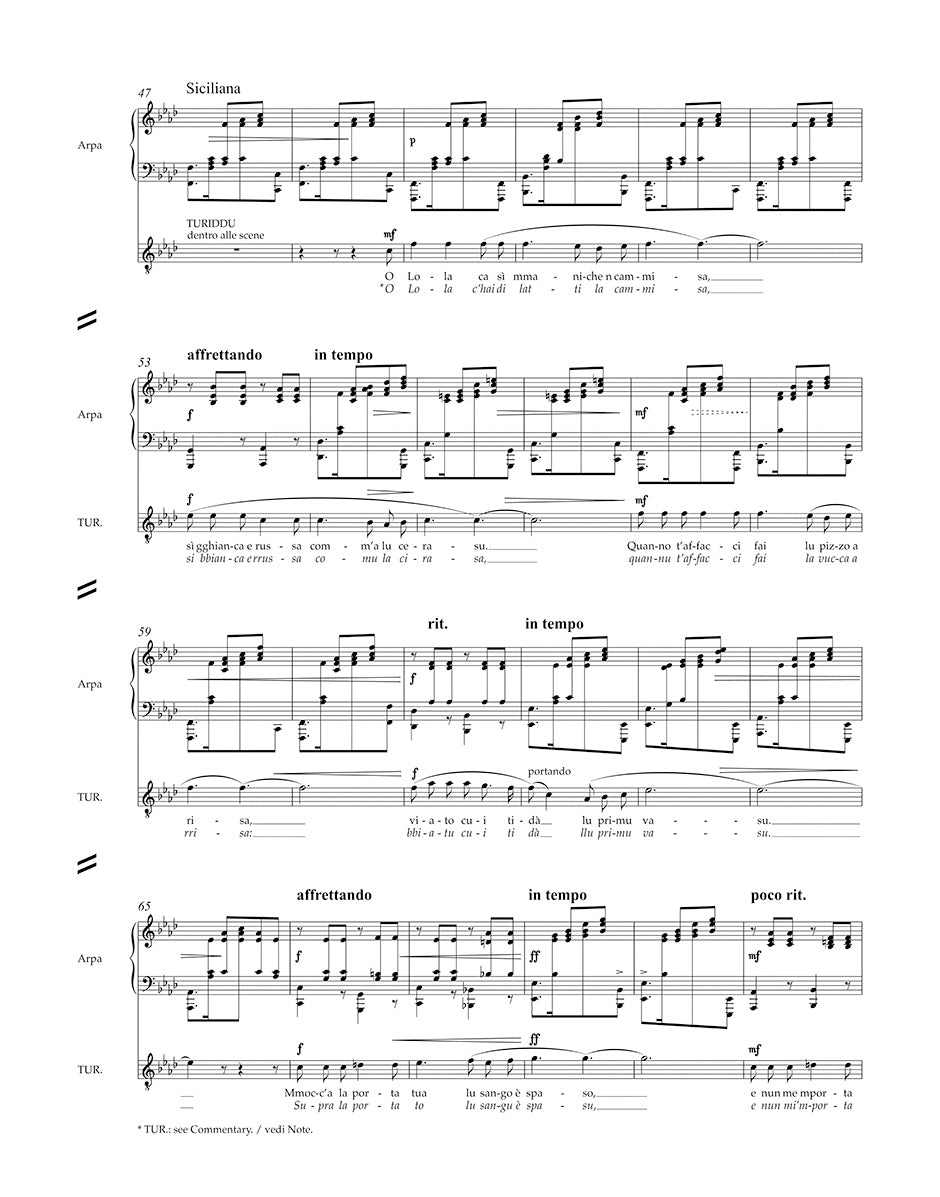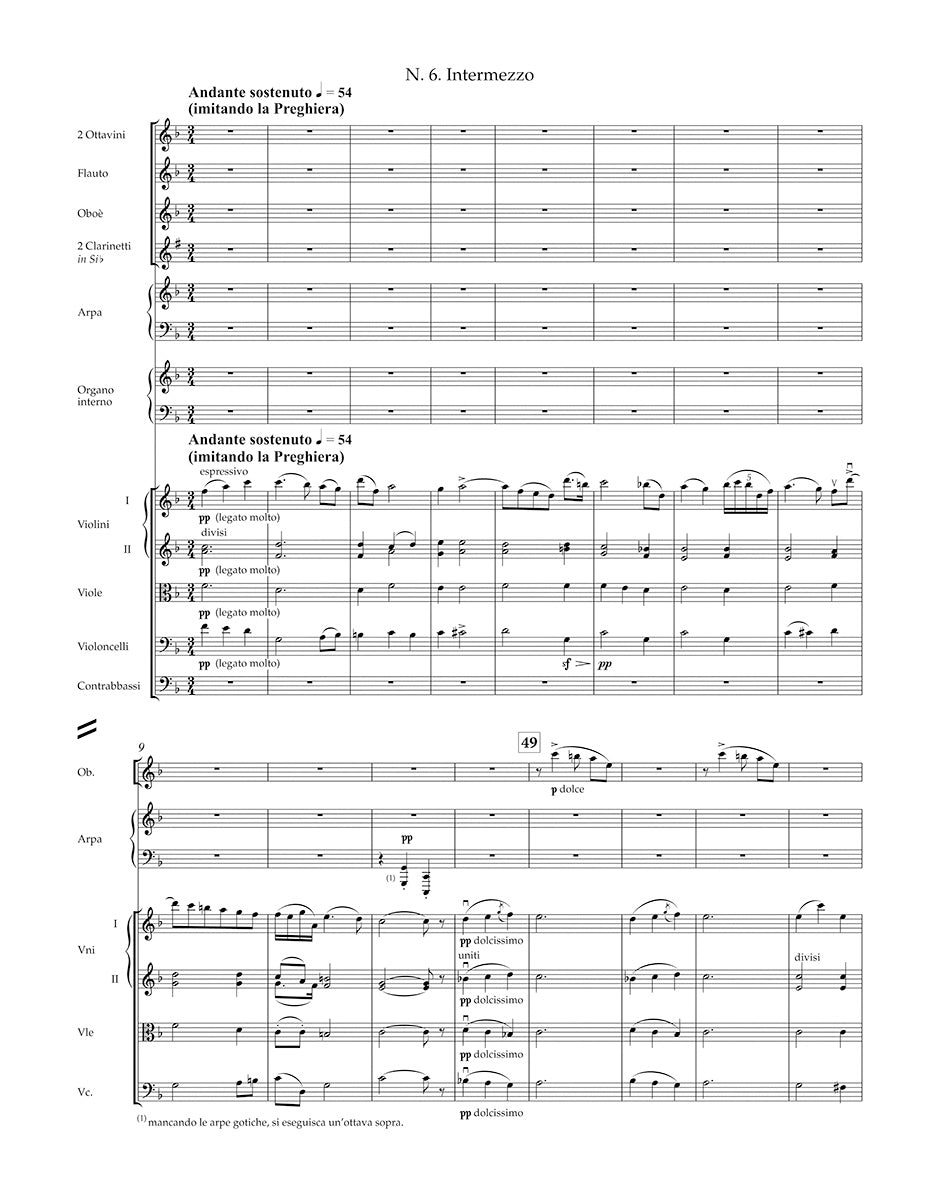Mascagni: Cavalleria rusticana
Expected to ship in about a week.
- Composer: Pietro Mascagni (1863-1945)
- Editor: Andreas Giger
- Format: Full Score
- Instrumentation: Opera
- Work: Cavalleria Rusticana
- Binding: Hardcover
- Work Language: Italian
- ISMN:
- Size: 10.4 x 13.0 inches
- Pages: 293
- Urtext / Critical Edition
Description
The premiere of Pietro Mascagni's "Cavalleria rusticana" in May of 1890 is a landmark in the history of opera. It was an enormous success, ostensibly marking the beginning of operatic verismo, and it was also praised for reenergizing a tradition the Italians felt had been languishing for some time. Mascagni composed the work as an entry for the second competition for a new one-act opera sponsored by the Milanese publisher Edoardo Sonzogno in 1888.
This history is well known, as is the fact that Mascagni made substantial cuts to his opera while it was being prepared for performance at the Teatro Costanzi in Rome. The reasons for these cuts are manifold. They appear in every number except for the Preludio and the Intermezzo and fall into three categories: those tightening the tempi, those reducing the more demanding chorus' parts, and those accommodating transpositions requested at the last minute by the protagonist singers Gemma Bellincioni and Roberto Stagno. All cuts are included in the appendix of "Cavalleria rusticana", the second volume of the series "Masterpieces of Italian Opera." (MIO)
For further information:
https://www.takte-online.de/en/music-theatre/detail/artikel/ohne-konzessionen-die-originale-cavalleria-rusticana https://www.deutschlandfunkkultur.de/ehre-wem-ehre-gebuehrt-die-cavalleria-rusticana-von-pietro-mascagni-dlf-kultur-ac6db35c-100.html
Contents:
- Editorial Policy
- Criteri editoriali
- Abbreviations / Abbreviazioni
- Sources
- Fonti
- Preface
- Introduzione
- Facsimiles / Facsimili
- Cast
- Libretto
- Critical Commentary
- Cavalleria rusticana
- Appendices / Appendici
Publishers use a lot of words to describe what they sell, and we know it can be confusing. We've tried to be as clear as possible to make sure you get exactly what you are looking for. Below are descriptions of the terms that we use to describe the various formats that music often comes in.
Choral Score
A score for vocalists that only contains the vocal lines. The instrumental parts are not there for reference. Generally, cheaper than a vocal score and requires multiple copies for purchase.
Facsimile
Reproductions of the original hand-written scores from the composer.
Full Score
For ensemble music, this indicates that the edition contains all parts on a single system (there are not separate parts for each player). In larger ensembles, this is for the conductor.
Hardcover
Hardbound. Generally either linen-covered or half-leather.
Orchestral Parts
Similar to a wind set, this is a collection of parts. In the case of strings, the numbers listed are the number of copies included, though generally these are available individually (often with minimum quantities required).
Paperback
When publishers offer multiple bindings (e.g. hardcover) or study scores, this is the "standard" version. If you're planning to play the music, this is probably what you want.
Performance / Playing Score
A score of the music containing all parts on one system, intended for players to share. There are not separate parts for each player.
Set of Parts
For ensemble music, this indicates that there are separate individual parts for each player.
Solo Part with Piano Reduction
For solo pieces with orchestra, this is a version that contains a piano reduction of the orchestra parts. For piano pieces, two copies are typically needed for performance.
Study Score
A small (think choral size) copy of the complete score meant for studying, and not playing. They make great add-ons when learning concertos and small chamber works.
Vocal Score
A score prepared for vocalists that includes the piano/organ part or a reduction of the instrumental parts.
Wind Set
For orchestral music, this is a collection of wind and percussion parts. The specific quantities of each instrument are notated.
With Audio
In addition to the printed music, the edition contains recordings of the pieces. This may be an included CD, or access to files on the internet.
With / Without Fingering (Markings)
Some publishers prepare two copies - a pure Urtext edition that includes no fingering (or bowing) suggestions and a lightly edited version that includes a minimal number of editorial markings.





